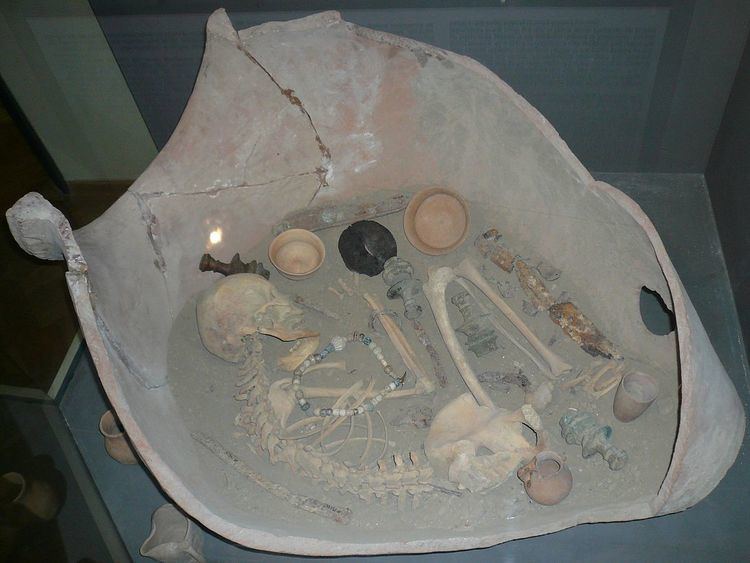 | ||
Jar-Burial Culture (Russian: Кувшинных погребении культура - kuvshinnykh pogrebenii kulturа), an archaeological culture that was widespread in the second century B.C. to the eighth century A.D. in the basins of the Kura and Araks rivers in Transcaucasia, particularly in Caucasian Albania. The culture was characterized by the burial of the dead in a strongly flexed position on their sides in large clay jars. The burial inventory contained articles made of metal (bronze and primarily iron tools and weapons and bronze, silver, and gold ornaments), wood, stone, clay, glass, and paste. Roman, Arsacid, and Sassanid coins have been found in later burials. The Jar-Burial culture belonged to a settled farming population, which also engaged in stock raising, hunting, fishing, and the production of handicrafts.
